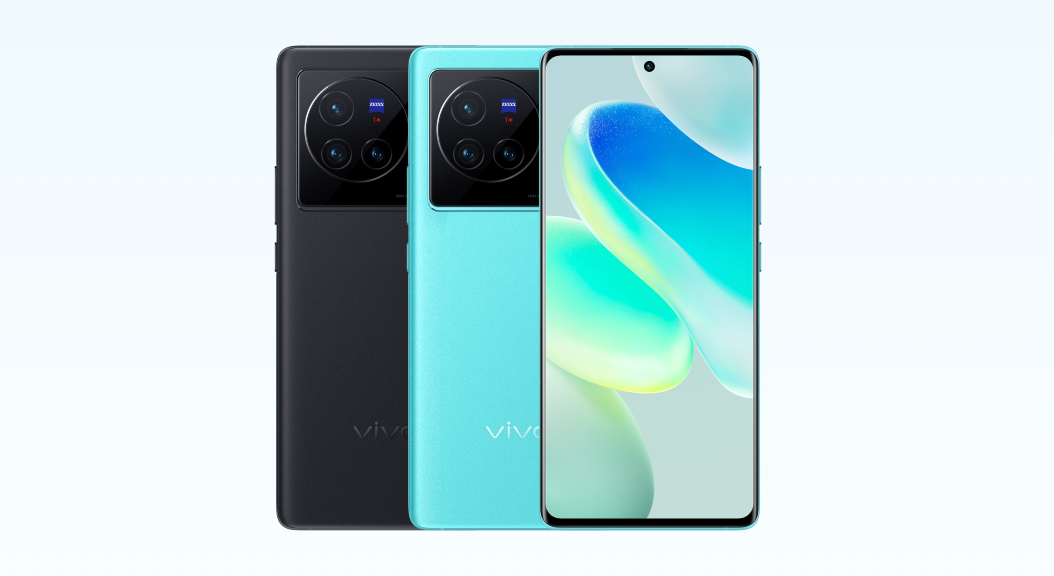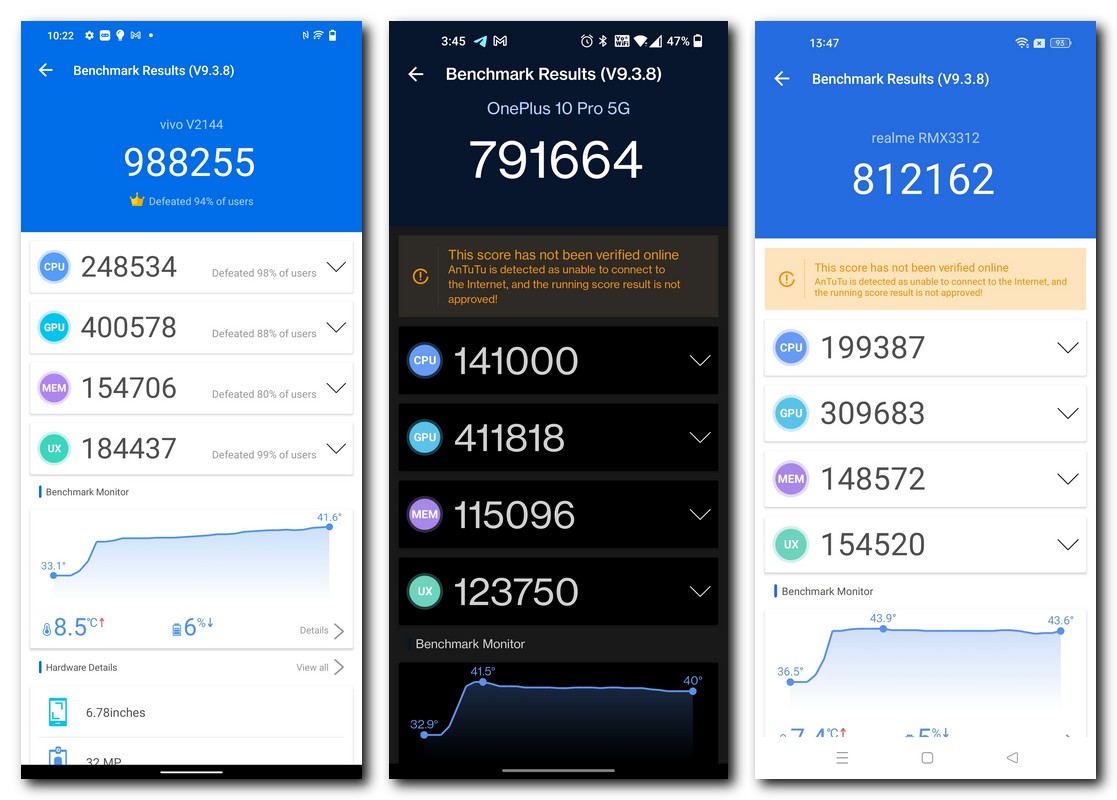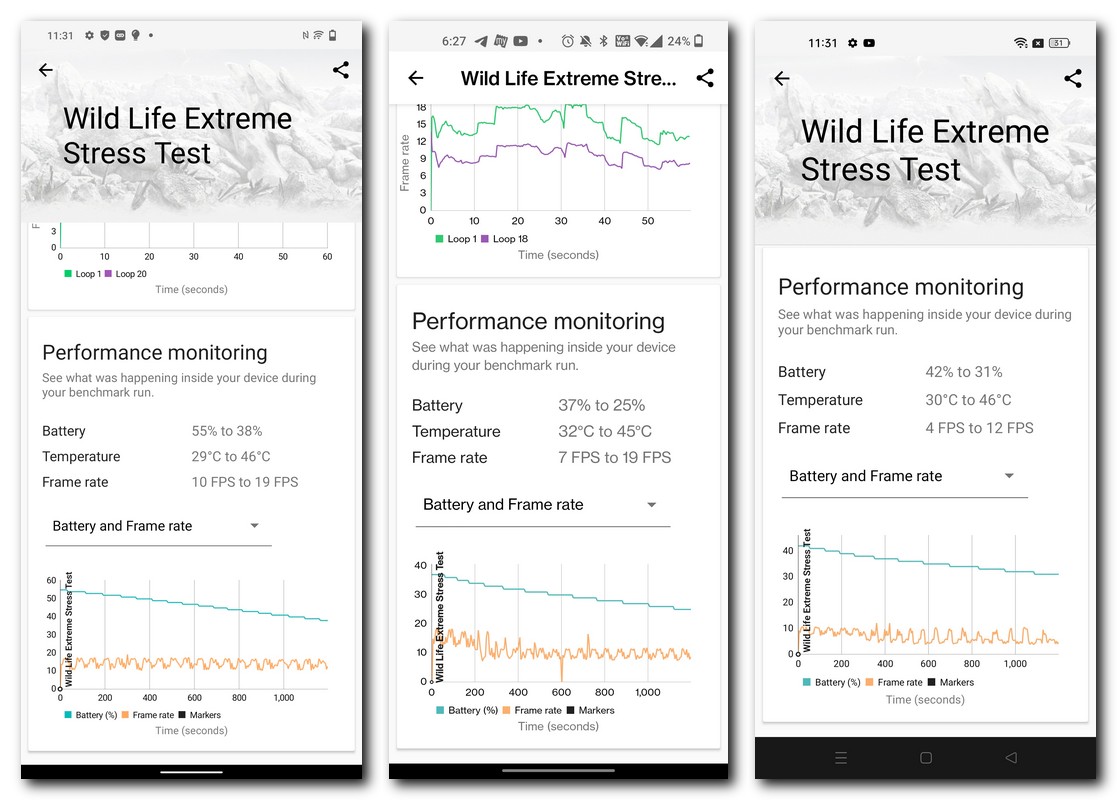
Taiwanese semiconductor giant MediaTek has stepped up its game drastically to take on Qualcomm and Samsung in the chipset market over the past few years. I have been a fan of the company’s Dimensity lineup since its inception a couple of years back and since then several smartphone OEMs have utilised its services. MediaTek’s latest chipset comes in the form of the Dimensity 9000 which is making its debut on the new Vivo X80. The chipmaker also revealed the Dimensity 8100 SoC recently, and we concluded it to be a step above what Qualcomm was offering in terms of computing prowess and thermal stability. It is time to see how the Dimensity 9000 stacks up against the flagships from Qualcomm, the Snapdragon 888 and 8 Gen 1. For this comparison, I have the Vivo X80 and it will be pitted against the 8 Gen 1-powered OnePlus 10 Pro (review) and the Realme GT 2 (review) that rocks the Snapdragon 888 SoC.
Table of Contents
Geekbench 5
Let’s begin with Geekbench 5, a popular synthetic benchmarking tool that gives us scores based on single-core and multi-core performance. The Dimensity 9000 from MediaTek is based on a 4nm manufacturing process by TSMC. The octa-core chipset comes with the Cortex X2 ultra-core which spins at 3.05GHz. The rest of the setup includes three Cortex A710 super cores spinning at 2.85GHz and four efficiency Cortex A510 cores. The Snapdragon 8 Gen 1 also has the same setup except that its X2 is clocked lower at 3GHz and the A710s are clocked at 2.5GHz. Lastly, the Snapdragon 888 has one Cortex X1 ultra-core at 2.84GHz, three Cortex A78 super cores at 2.42GHz, and four Cortex A55 efficiency cores spinning at 1.8GHz.

Looking at the Geekbench 5 scores, the Vivo X80 outputs multi-core and single-core results of 3,823 and 1,142 respectively. The same for the OnePlus 10 Pro is 3,255 and 960 while on the Realme GT 2 the scores are 3,047 and 1,130 respectively. The results are more or less the same but it is interesting to note that the Dimensity 9000 on the X80 has the highest multi-core and single-core scores among the three. As compared to the 8 Gen 1 on the OnePlus 10 Pro, the X80 is ahead by 15 percent and 16 percent on multi-core and single-core results. Surprisingly the Snapdragon 888 from 2020 has a better single-core score than the newer 8 Gen 1.
Antutu V9.3.8

In terms of overall performance, which takes into consideration GPU, memory, and UI, Antutu is the perfect benchmark to give a quantitative analysis. The test also tells you how much temperature was gained alongside the drop in battery for the duration of the benchmark. On the Vivo X80, the score was a whopping 988,255 which is the highest I’ve seen any device perform on Antutu. The OnePlus 10 Pro actually is third on the list at 791,664 while the Realme GT 2 is second with a score of 812,162. Percentage-wise, the Vivo X80 is ahead of the OnePlus 10 Pro by a factor of 20 percent. As for how the two-year-old Snapdragon 888 is able to beat the newer 8 Gen 1, I can only assume that the 10 Pro is throttling down performance to prevent overheating on the device. I ran the benchmark thrice at 20-minute intervals on the OnePlus 10 Pro to be absolutely sure and every time the result was below the 800,000 mark. All three devices had a nearly equal rise in temperatures and battery loss while running the benchmark.
CPU Throttle

Smartphones generally throttle down their maximum performance for thermal reasons and the CPU Throttle benchmark makes it easy to assess how much throttling is happening under sustained load. For the purposes of this comparison, I ran 20 threads for 30 minutes and the results were quite startling. The Snapdragon 8 Gen 1 has been guilty of excessive thermal throttling on several phones that I have reviewed. On the OnePlus 10 Pro, the CPU throttles down to 66 percent of peak performance which can be considered slightly below average as far as 8 Gen 1 devices are concerned. However, the story is a bit more alarming for the Vivo X80 which cut down its performance to 55 percent, the lowest I have seen on the CPU Throttle benchmark. The Realme GT 2 is the most stable of the lot with a peak performance of 78 percent after 30 minutes.
Wild Life Extreme Stress Test


3DMark is a very handy tool for GPU-related metrics and the Wild Life Extreme Stress Test is a synthetic benchmark I fall back on to gauge how well a premium device handles continuous stress. It is a bit more detailed than the CPU Throttle benchmark and offers a stability score among other things. However, the results are actually the opposite of what I had expected. The Vivo X80 got the highest stability score of 95.2 percent as compared to the OnePlus 10 Pro’s 62.8 percent. The Realme GT 2 was the lowest at 55.8 percent. Even so, the OnePlus 10 Pro actually had the highest loop score at 2,558 compared to 2,439 on the X80. However, since the latter’s lowest loop score was not far off from the highest, it gets a better stability score. One thing to note here is that the X80 got hot while running the benchmark, gaining 17 degrees.
BGMI test

Battlegrounds Mobile India is a graphically-intensive game that can bring a lot of smartphones to their knees. Flagship devices generally fare quite well while running the game in terms of graphics and frame rate settings. I ran a 30-minute session on each of the phones to see how much battery drained, the temperature gain and if there were instances of frame drops. The Dimensity 9000-powered Vivo X80 was actually the best in terms of frame rate as it could do 90fps when graphics were set at Smooth. Both the OnePlus 10 Pro and Realme GT 2 could muster up only Extreme (60fps) options. For parity between the three, I set the graphics at HDR and the frame rate at Extreme. Vivo devices are generally quite thin in design which provides a weaker thermal envelope. The battery capacity of the device is also lower than both the others. While the game delivered a steady 60fps frame rate, the X80 got very hot and gained up to 14 degrees in temperature while dropping 9 percent battery. The OnePlus 10 Pro, on which I have played a ton of BGMI earlier, performed quite well in terms of maintaining the frame rate while only seeing an 8-degree rise in temperature. On the Realme GT 2, the story is quite good in terms of power efficiency with only 5 percent battery dropping while keeping the 60fps constant. However, the phone does get a bit hot with a temperature rise of 11 degrees.
Verdict
From the performance benchmarks, it seems clear that MediaTek has a winner on its hands in the flagship space. There are a few concerns that revolve around overheating which could cause thermal throttling. Gaming performance seems fine on the X80 although it comes at the cost of rapid battery loss. I think a few of these niggles could be due to the Vivo X80’s rather thin chassis, but I will have more clarity when I test the SoC on other devices. For the time being, at least looking at Geekbench 5 and Antutu scores, the MediaTek Dimensity 9000-powered Vivo X80 comes across as one of the fastest phones in the market.












